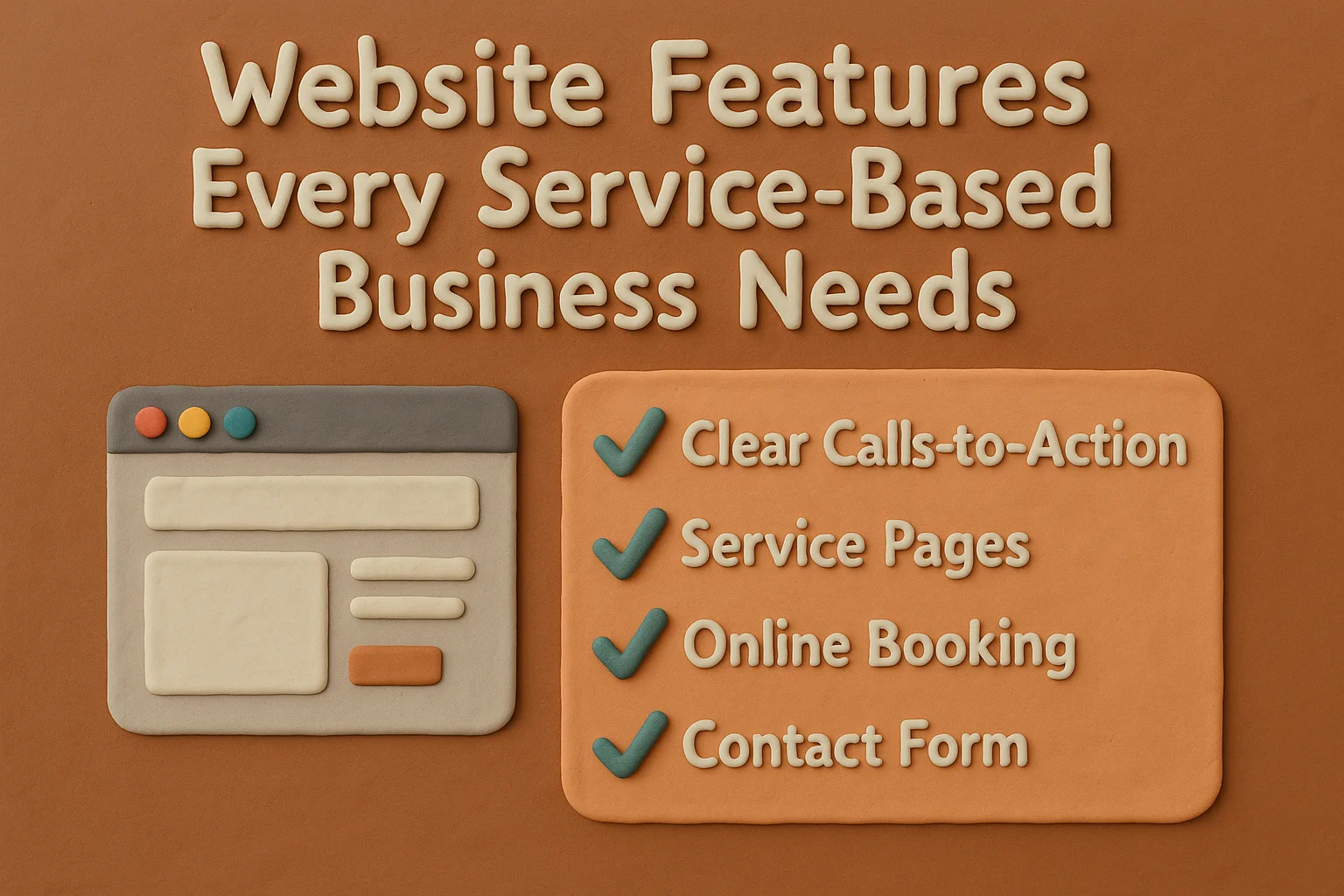If you run a service-based business, your website isn’t just a digital brochure—it’s the front door to your business, your lead generator, and often your first impression. But not all websites are created equal. Whether you offer legal services, landscaping, consulting, or cleaning, the essential website features below can make the difference between a site that converts and one that collects dust.
In this guide, we’ll break down the must-have features your service website needs to build trust, drive inquiries, and generate real results.
Why Feature-Rich Websites Matter for Service-Based Businesses
Unlike eCommerce sites, service-based businesses rely on building credibility, clarity, and connection. That means your website must do more than just look good—it needs to guide, persuade, and convert.
A service website should:
✅ Clearly explain what you do and who you help
✅ Build trust quickly with visitors
✅ Make it easy for someone to contact or book you
✅ Support SEO, speed, and mobile usability
Let’s dig into the essential website features that make it all happen.
1. Clear Value Proposition Above the Fold
You have seconds to capture attention. Your homepage should immediately answer:
- Who you are
- What you do
- Why you’re different
Pro Tip: Use a bold headline, short subhead, and strong call-to-action (CTA) visible without scrolling.
💡 Why Your Website Isn’t Converting (And How to Fix It)
2. Service Pages Optimized for SEO
Each core service you offer deserves its own page. Why?
- You can target service-specific keywords
- You give search engines more entry points
- Visitors find exactly what they’re looking for
Structure your service pages like this:
- Overview
- Benefits
- Process or approach
- FAQs
- CTA (e.g., “Schedule a Consultation”)
📚 How to Build a Website That Supports Your SEO Strategy
3. Easy-to-Use Contact Form (and Multiple CTAs)
Don’t hide your contact form in a dusty corner. Instead:
✅ Include it on every service page
✅ Keep fields minimal (Name, Email, Message)
✅ Add an optional calendar booking tool for consultations
✅ Reinforce with CTA buttons like “Get a Quote” or “Book Now”
Bonus: Include a clickable phone number and email address in the site header and footer for instant access.
4. Trust-Building Elements
Trust is everything when someone is hiring a service. Include:
- ⭐ Google or Yelp reviews
- 💬 Testimonials and case studies
- 🛡️ Certifications, affiliations, and awards
- 👥 Real team photos—not just stock imagery
📘 E-E-A-T Explained: Google’s Trust Signals and How to Improve Yours
5. Mobile-Friendly, Fast-Loading Design
More than 60% of traffic comes from mobile. If your site doesn’t load quickly or work flawlessly on phones, you’re losing leads.
Key tips:
- Use responsive design
- Avoid pop-ups that block the content
- Optimize images for speed
- Test your site on different screen sizes
📈 The SEO Impact of Website Speed and How to Improve It
6. Lead Magnet or Free Resource
Offering something valuable in exchange for an email address helps build your list and nurture future clients.
Popular lead magnets for service businesses:
- Free guides or checklists
- Pricing sheets
- Consultations or audits
- “Before you hire us” PDFs
Make it easy to download and tie it into your CRM or email platform.
7. Social Proof and Portfolio
If your service has visual results (design, landscaping, makeup, photography), you need a portfolio. For other services, case studies or success stories work just as well.
Include:
- Project summaries
- Before/after visuals
- Measurable results
- Client quotes
8. Clear Navigation and Site Structure
Simplicity wins. Your menu should:
- Be visible and sticky (especially on mobile)
- Include only essential pages (Home, Services, About, Blog, Contact)
- Avoid overwhelming dropdowns or hidden links
And yes—footer navigation counts for SEO and UX too.
9. FAQ Section
A well-structured FAQ answers common objections and improves SEO.
Bonus: Add FAQ schema markup so your content can appear directly in Google’s rich results.
10. Analytics and Tracking
You can’t improve what you don’t measure.
At a minimum, set up:
- Google Analytics 4
- Google Search Console
- Conversion tracking (form fills, calls, calendar bookings)
- A heatmap tool like Hotjar or Microsoft Clarity
📊 How to Track Conversions Accurately in Google Ads
Build Smarter with Twofold
At Twofold, we help service-based businesses build websites that look good, load fast, and—most importantly—convert.
✅ SEO-backed strategy
✅ Conversion-first design
✅ Speed, UX, and accessibility built in
✅ Messaging that connects with your audience
✅ Ongoing support to refine and grow
👉 Let’s Build a Website That Works for Your Business
Final Thoughts
If you’re serious about growing your service-based business, your website can’t just “look nice.” It needs to function as a lead-generating, trust-building, revenue-driving machine.
These essential website features will help you build the kind of experience that users love—and Google rewards.
Partner with Twofold to Build a Site That Does More Than Look Good
